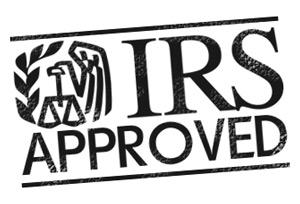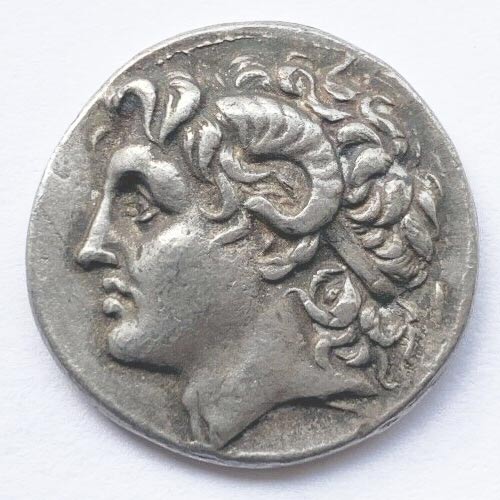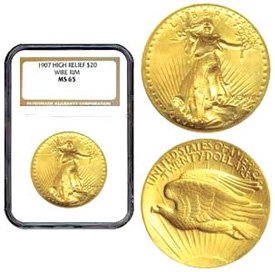
“What is Better in my IRA – Bullion or Collectible Coins? My IRA dealer is pushing some rare collectible coins but I feel they are too expensive. What to do?”
 Bullion.Directory’s Ask Ally Service
Bullion.Directory’s Ask Ally Service
By Alison Macdonald
Commercial Editor at Bullion.Directory
Martin from California has a dilemma that is all too common: his dealer is pushing for the inclusion of rare or collectible coins in his IRA, but he can’t shake off a nagging feeling that these coins are more expensive than they ought to be.
And with good reason.
This is because collectibles, numismatics and rare coins will always carry a higher premium over the spot price or melt value.
Typically this far higher premium is reflected in a coin’s rarity or desirability.
But how many average gold IRA buyers know if a coin is truly rare or desirable?
And this is why my answer is always to ONLY buy bullion. Leave collectibles to collectors.
I’m proudly Scottish. As a race stereotype we’re known for our canny nature and love of a bargain.
When it comes to getting the most amount of gold for your dollar? Bullion – whether as bars or coins – is always going to be nearer spot than any collectible.
You want to pay more than you need to? Be my guest. Me? No chance.
But What is a Collectible Coin? The IRS View
 Here I’m going to look specifically at what the IRS deems as collectible, as buying true collectibles will drastically change the tax treatment on your investments and could even count as taking an early distribution from your account, leading to extra tax, fines and possibly risk the tax advantages of your entire IRA.
Here I’m going to look specifically at what the IRS deems as collectible, as buying true collectibles will drastically change the tax treatment on your investments and could even count as taking an early distribution from your account, leading to extra tax, fines and possibly risk the tax advantages of your entire IRA.
Initially it seems that ALL precious metals coins are considered collectibles, but the IRS thankfully make a number of exceptions. Even if some of them are a bit fuzzy.
The rules start off “Collectibles under IRC Section 408(m)(2) include: Any metal or gem, any stamp or coin (with limited exceptions)”
Reading on, these exceptions are:
The following coins and metals are not included in the definition of “collectible” under IRC Section 408(m):
- Certain gold, silver, or platinum coins described in 31 USC Section 5112. See IRC Section 408(m)(3)(A) for the full definition.
- Any coin issued under the laws of any state.
- Any gold, silver, platinum, or palladium bullion of a certain fineness if a bank or approved non-bank trustee keeps physical possession of it. See IRC Section 408(m)(3).
Now I’m not sure how many ordinary Americans know IRC Section 408(m)(3)(A) verbatim so I’m going to go ahead and copy out the precious metals coins it refers to here:
- A fifty dollar gold coin that is 32.7 millimeters in diameter, weighs 33.931 grams, and contains one troy ounce of fine gold.
- A twenty-five dollar gold coin that is 27.0 millimeters in diameter, weighs 16.966 grams, and contains one-half troy ounce of fine gold.
- A ten dollar gold coin that is 22.0 millimeters in diameter, weighs 8.483 grams, and contains one-fourth troy ounce of fine gold.
- A five dollar gold coin that is 16.5 millimeters in diameter, weighs 3.393 grams, and contains one-tenth troy ounce of fine gold.
- A $50 gold coin that is of an appropriate size and thickness, as determined by the Secretary, weighs 1 ounce, and contains 99.99 percent pure gold.
- A $25 coin of an appropriate size and thickness, as determined by the Secretary, that weighs 1 troy ounce and contains .9995 fine palladium.
- Coins that are 40.6 millimeters in diameter and weigh 31.103 grams; contain .999 fine silver; have a design—
(A) symbolic of Liberty on the obverse side; and
(B) of an eagle on the reverse side…
The next allowable ‘collectible’ listed as an exception is perhaps the most gray area.
408(m)(3)(A)(iv) A coin issued under the laws of any State
Does the law mean a US State or a foreign State? This catches a number of people out and a lot has been written on the subject, confusingly arguing both stances.
To be truly safe, I’d stick with US-only.
Does the rule apply only to true legal tender coins, or include other non legal-tender coins or rounds? Again to be safe I’d stick to legal tender only, and leave ‘bullion’ for the last exception, being 408(m)(3)(B):
Any gold, silver, platinum, or palladium bullion of a fineness equal to or exceeding the minimum fineness that a contract market (as described in section 5 of the Commodity Exchange Act, 7 U.S.C. 7) requires for metals which may be delivered in satisfaction of a regulated futures contract.
What does this mean?
With the key exception of American gold eagle bullion coins at .9167 fine, which are covered above, Bullion purity must be .995+ fine and accredited by COMEX/NYMEX / ISO9001 Certified. Silver must be .999+ fine, whilst platinum and palladium must be .9995+ fine and all with similar COMEX/NYMEX / ISO9001 Certification.
Taking all of this into consideration, none of the above are considered collectibles in the eyes of the IRS.
In other words, if a coin is not any of the US-legal tender precious metals coins, hasn’t been issued under the laws of a ‘State’, doesn’t meet purity standards and is not COMEX/NYMEX / ISO9001 Certified… then it’s a collectible.
Clear?
Not so fast. We can have collectibles that are not collectible, but somehow are collectible.
Ambiguity in Definition
 The IRS sets clear purity standards for metals in IRAs but is far less specific when it comes to truly defining ‘collectible’ coins.
The IRS sets clear purity standards for metals in IRAs but is far less specific when it comes to truly defining ‘collectible’ coins.
You see, the IRS has a broad view on what makes a collectible, exempting a select group of precious metals investments from this category by using the above, somewhat detailed, checklist.
But the actual retail precious metals market has a very different definition of what makes a collectible: Beauty, rarity and desirability can, and do, lift a piece of gold or silver far above it’s raw intrinsic value.
This lack of clarity creates a grey area. In the metals marketplace, collectible coins are those valued more for their numismatic value than their metal content – think rare, historic, or specially minted coins.
Now it is generally considered that historic and ancient coins can be ruled out of being used in an IRA by also being classed as antiques. Antiques are clearly and specifically not allowed.
But this still leaves behind other rare and collectible coins – which provided they meet any of the IRS definitions for NOT being collectibles, actually are collectibles that CAN be added to an IRA.
Too confusing?
You bet. And this confusion creates opportunity…
The Marketing of Premium Coins
 Capitalizing on this ambiguity, some IRA companies market premium coins with significant markups, treading a thin line between what’s considered an investment-grade coin and a collectible.
Capitalizing on this ambiguity, some IRA companies market premium coins with significant markups, treading a thin line between what’s considered an investment-grade coin and a collectible.
It’s understandable. The metals market is highly competitive and margins on common bullion are extremely tight. It makes sound business sense to sell products with a higher profit line.
These coins, often sold with the promise of higher returns due to their rarity or some other special features, can be appealing. However, the high markup over the spot price of the metal can make them a risky bet.
The extra cost associated with these coins often goes beyond their metal value, and there’s no guarantee that this additional investment will pay off in the long term. Moreover, the resale market for such coins might not be as robust as for standard bullion, potentially impacting liquidity and profitability.
It could be that these coins are not as rare as the dealer implied. This unfortunately happens a lot as a number of recent court cases have shown, and investors have found themselves holding metals worth 50% or less of what they had been led to believe they were buying.
As the FTC says, unless you are an expert on what makes a collectible valuable, perhaps it’s better not to listen to advice from someone who makes more profit by selling them.
And there is of course the worry that if at some point in the not too distant future the IRS deems these coins to be ‘collectible’, by THEIR definition…
Downsides of Collectible Coins for an IRA
- Higher Premiums and Dealer Profit Margins: As I touched on, one of the primary reasons IRA dealers push collectible coins is the higher premiums they carry. These premiums translate into higher profit margins for the dealers compared to standard bullion coins and higher commissions for sales reps.
- Exaggerated Investment Value: Dealers often market collectible coins as unique investment opportunities and may exaggerate anticipated yields or higher returns than available with standard bullion. These claims, however, are speculative, as the value of collectibles can be highly subjective and market-dependent. This is especially so if the collectible is neither rare nor special, other than in the words of the sales broker.
- Potential IRS Non-Compliance: One of the most significant risks of including collectible coins in an IRA is the potential for IRS non-compliance. If the IRS deems these coins to be collectibles rather than legitimate investment assets, investors could face penalties or disqualification of their IRA. Why risk this possibility?
- Complexity in Pricing: Unlike bullion, whose value is primarily based on metal content, the valuation of collectible coins incorporates factors like rarity, condition, and historical significance. This complexity can make it difficult for uneducated or non-expert investors to assess whether they’re getting a fair deal or not. In many cases, probably not.
- Resale Challenges: The resale market for collectible coins can be far narrower than for standard bullion. Finding a buyer willing to pay a premium price for a specific collectible coin can be challenging, affecting the liquidity of the investment.
While collectible coins in an IRA might seem like an attractive proposition, the reality is often more complicated.
The allure of potential high returns must be weighed against the risks of non-compliance, pricing complexity, and potential resale difficulties.
For most, if not ALL investors, especially those seeking stability and compliance in their retirement savings, bullion remains a far more straightforward and reliable choice.
Case Studies: Bullion vs. Collectible Coins in IRAs
I have a saying I stand by. Investors buy bullion, collectors burn money.
To hammer this home and to further explain some implications of choosing between bullion and collectible coins for IRAs, I’m going to create some hypothetical scenarios to illustrate some long-term outcomes, potential compliance issues, and overall investor satisfaction with each investment type.
Now I understand I may appear to be biased – because I am.
 Case Study 1: John’s Bullion Investment
Case Study 1: John’s Bullion Investment
Scenario: John decides to invest in standard gold and silver bullion for his IRA. He focuses on widely recognized coins like American Eagle and Canadian Maple Leaf, known for their purity and market acceptance.
Long-term Outcome: Over the years, John’s investment tracks the market value of the metals, experiencing steady growth without dramatic spikes. His investment remains compliant with IRS rules, avoiding any complications.
Investor Satisfaction: John is satisfied with the predictable and stable nature of his investment. The liquidity and ease of valuation at the time of his retirement bring him peace of mind. He is an excellent specimen of a human and lives happily ever after.
 Case Study 2: Karen’s Collectible Coin Venture
Case Study 2: Karen’s Collectible Coin Venture
Scenario: Karen is enticed by her dealer to invest in ‘rare’ collectible coins for her IRA, promising higher returns. She invests in a series of limited-edition coins.
Long-term Outcome: Karen’s collectible coins do not appreciate as projected. When Karen decides to liquidate her IRA, she finds out that the coins were neither rare nor collectible. She faces challenges in finding buyers willing to pay the premium she invested and ends up selling the coins at bullion value. She loses money on the whole investment because she paid the dealer a 50% markup and the market has only risen 30% during her ownership.
Investor Satisfaction: Karen ends up bitterly disappointed with the overall return on her investment. The resale difficulties and a number of other issues lead to an angry dissatisfaction and she joins a class action lawsuit against the dealer. The dealer files for bankruptcy and Karen gets nothing. The dealer sets up a new company a month later. Karen spends the rest of her life dealing with barely suppressed anger and shouting at people for disproportionatly insignificant reasons.
 Case Study 3: Alex’s Mixed Approach
Case Study 3: Alex’s Mixed Approach
Scenario: Alex adopts a mixed approach, allocating a large portion of his IRA to bullion and another smaller percentage in collectible coins, aiming to balance safety with speculative growth.
Long-term Outcome: The bullion part of his portfolio performs consistently, while the collectible coins see fluctuating values. One day Alex hears from the IRS and is notified that his collectibles are not allowed in an IRA. He pays a fine and back taxes on his entire IRA account, taxed as if it were an early distribution.
Investor Satisfaction: Alex experiences mixed emotions; he appreciates the stability of bullion but is angry with himself for having ignored a warning from his attractive and charismatic friend (who works at a well known bullion dealer directory.)
These case studies highlight the differences in performance and satisfaction levels between investing in bullion and collectible coins.
OK, so they are admittedly worst case scenarios, but honestly why put your retirement account or your actual retirement at risk?
If you TRULY want to buy collectible coins, by all means do so – but hold them outside of an IRA – and buy them for their beauty with no expectation of making any profits over their underlying metal appreciation.
Summary: Safety and Compliance in IRA Investments
The golden rule here is simple: knowledge is power. Understanding the nature of your investment, how it fits within the IRS guidelines, and how it aligns with your long-term financial strategy is crucial.
Bullion, with its straightforward market value and compliance, is seen as a safe harbor, particularly for those who prioritize stability and predictability in their retirement planning.
On the other hand, while collectible coins can be enticing with tales of rarity and potential high returns, they open an investor up to increased risk – and a more complex terrain of valuation, liquidity, and IRS compliance.
This is why seeking independent, professional advice becomes invaluable. A financial advisor or a tax expert can provide unbiased insights, helping you navigate the nuances of precious metal investments in your IRA.
Bullion.Directory lists some of the industry’s most trusted gold IRA dealers and winners of our annual Bullion Dealer of the Year public vote. Some of these companies, such as Noble Gold go so far as refusing to sell any collectibles within an IRA.
Alison Macdonald

Ask Ally, is your direct line to gold investment wisdom. Alison “Ally” Macdonald, with her extensive experience and sharp tongue, cuts through clutter to offer honest, insider takes on your gold investment questions.
Need insights or industry secrets? Ally’s ready to deliver, combining professional expertise with a smattering of Glasgow patter. Get ready for straightforward, expert guidance from a one-time gold shill turned good guy. Ask Ally Today












 Material provided on the Bullion.Directory website is strictly for informational purposes only. The content is developed from sources believed to be providing accurate information. No information on this website is intended as investment, tax or legal advice and must not be relied upon as such. Please consult legal or tax professionals for specific information regarding your individual situation. Precious metals carry risk and investors requiring advice should always consult a properly qualified advisor. Bullion.Directory, it's staff or affiliates do not accept any liability for loss, damages, or loss of profit resulting from readers investment decisions.
Material provided on the Bullion.Directory website is strictly for informational purposes only. The content is developed from sources believed to be providing accurate information. No information on this website is intended as investment, tax or legal advice and must not be relied upon as such. Please consult legal or tax professionals for specific information regarding your individual situation. Precious metals carry risk and investors requiring advice should always consult a properly qualified advisor. Bullion.Directory, it's staff or affiliates do not accept any liability for loss, damages, or loss of profit resulting from readers investment decisions.

Leave a Reply